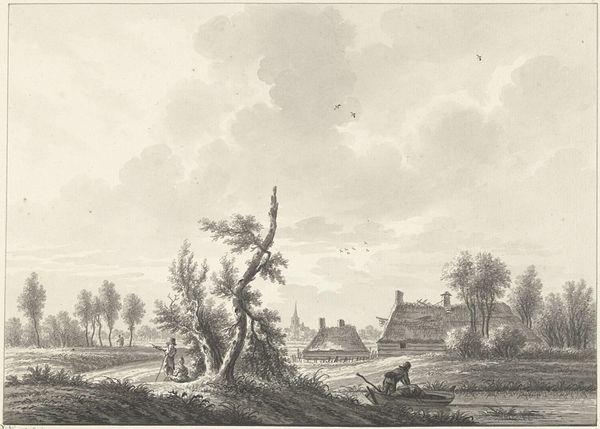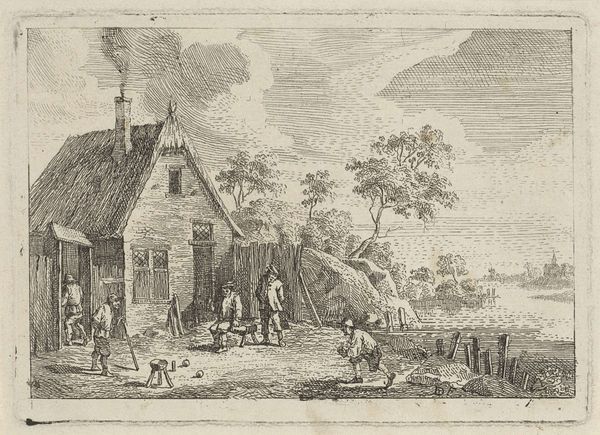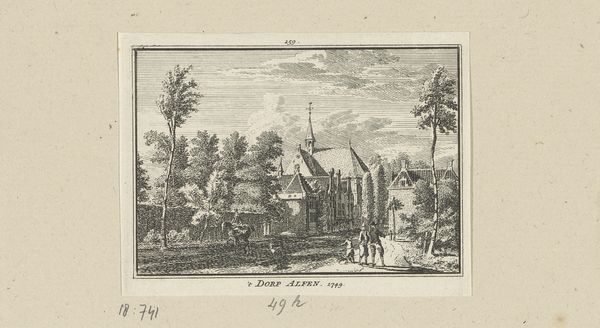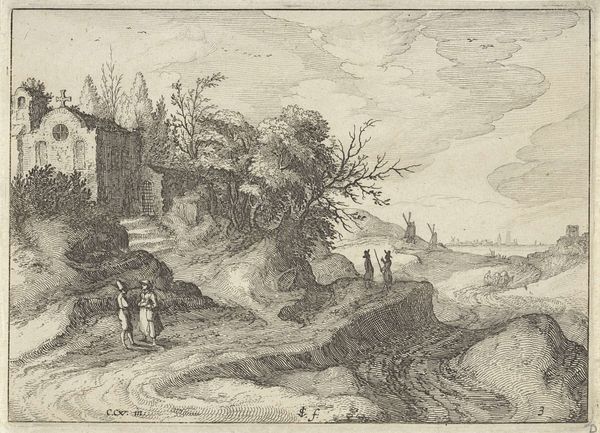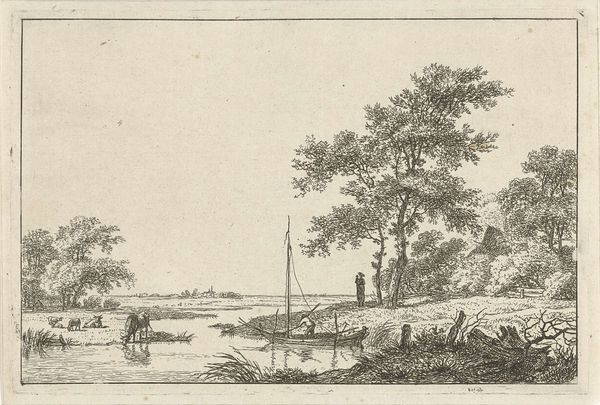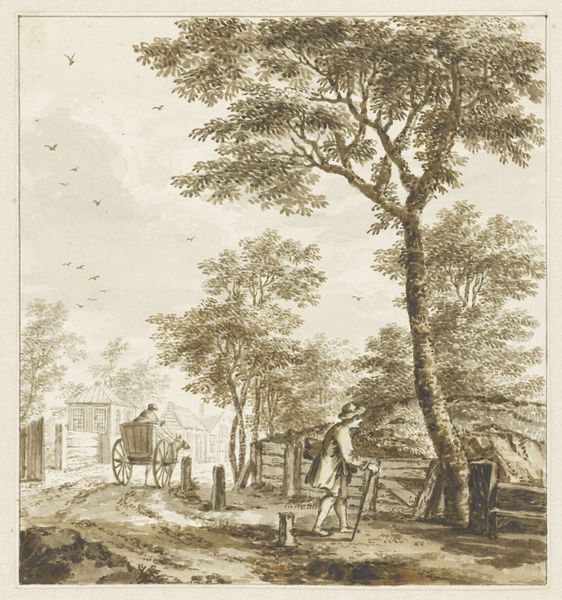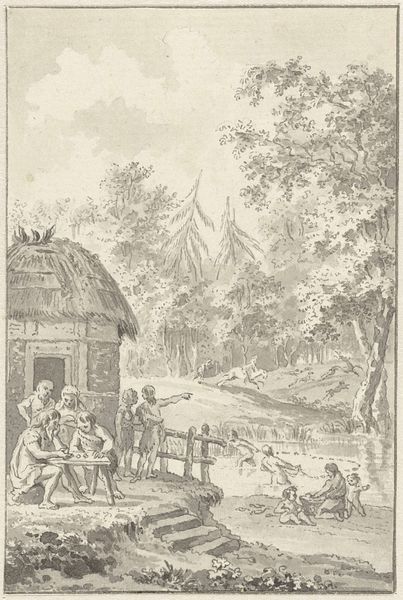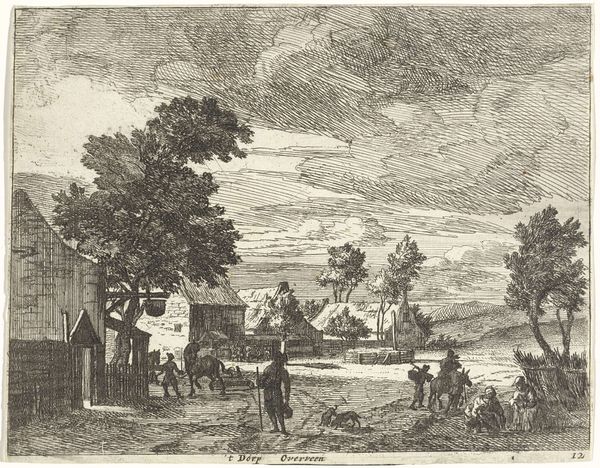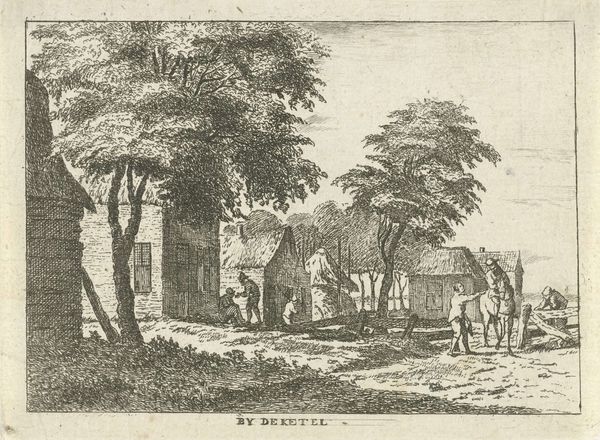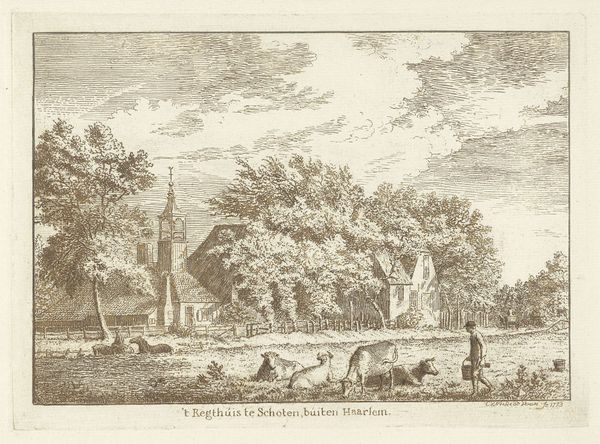
print, engraving
#
dutch-golden-age
# print
#
old engraving style
#
landscape
#
river
#
genre-painting
#
engraving
Dimensions: height 94 mm, width 125 mm
Copyright: Rijks Museum: Open Domain
Curator: Let's take a look at "View of a River" by Hendrik Roosing, created in 1780. It's a beautifully detailed engraving, part of the Rijksmuseum collection. Editor: It has a lovely pastoral quality. I'm immediately struck by the balance – a sort of asymmetrical symmetry created by the detailed trees on the right and the boat on the left. A slice of daily life made permanent in the age of Enlightenment. Curator: Precisely. The engraving technique allows for exquisite details. Roosing is depicting a very specific time and place, isn't he? Observe the positioning of the figures and the implied social hierarchy. People in carts are separated by proximity from the working man walking the road. Editor: And notice the interplay of light and shadow. See how he uses fine lines to suggest the shimmer on the water and the rough texture of the thatched roofs? I find that compelling from a purely formal perspective – how he builds the entire image with these delicate strokes. What do you think that might mean for a viewer in the late eighteenth century? Curator: I'd suggest it romanticizes labor, fitting a demand of idyllic representation, almost masking the harsh realities of rural life for both wealthy patrons and a burgeoning middle class wanting to connect to simpler ways. The inclusion of the title “Te Berkel” indicates that this slice of life isn't some fantasyland, but rather a real village where real people navigate real structures of society. Editor: A perfect summary, really. You know, seeing the river depicted as this central artery reminds me how essential such waterways were for trade and transportation. That small community in the etching probably thrives precisely because of its geographic access to broader routes. The tiny windmills there in the background make an important contribution to trade. Curator: It speaks to how artistic interpretation can offer a multifaceted view. We see the aesthetic choices, the artistic skills involved, but also the historical context informing not just the artwork’s creation but also its subsequent viewing. Editor: A fitting end, I think, bringing both the structural and societal elements of art to light for us. Thanks for your time.
Comments
No comments
Be the first to comment and join the conversation on the ultimate creative platform.

